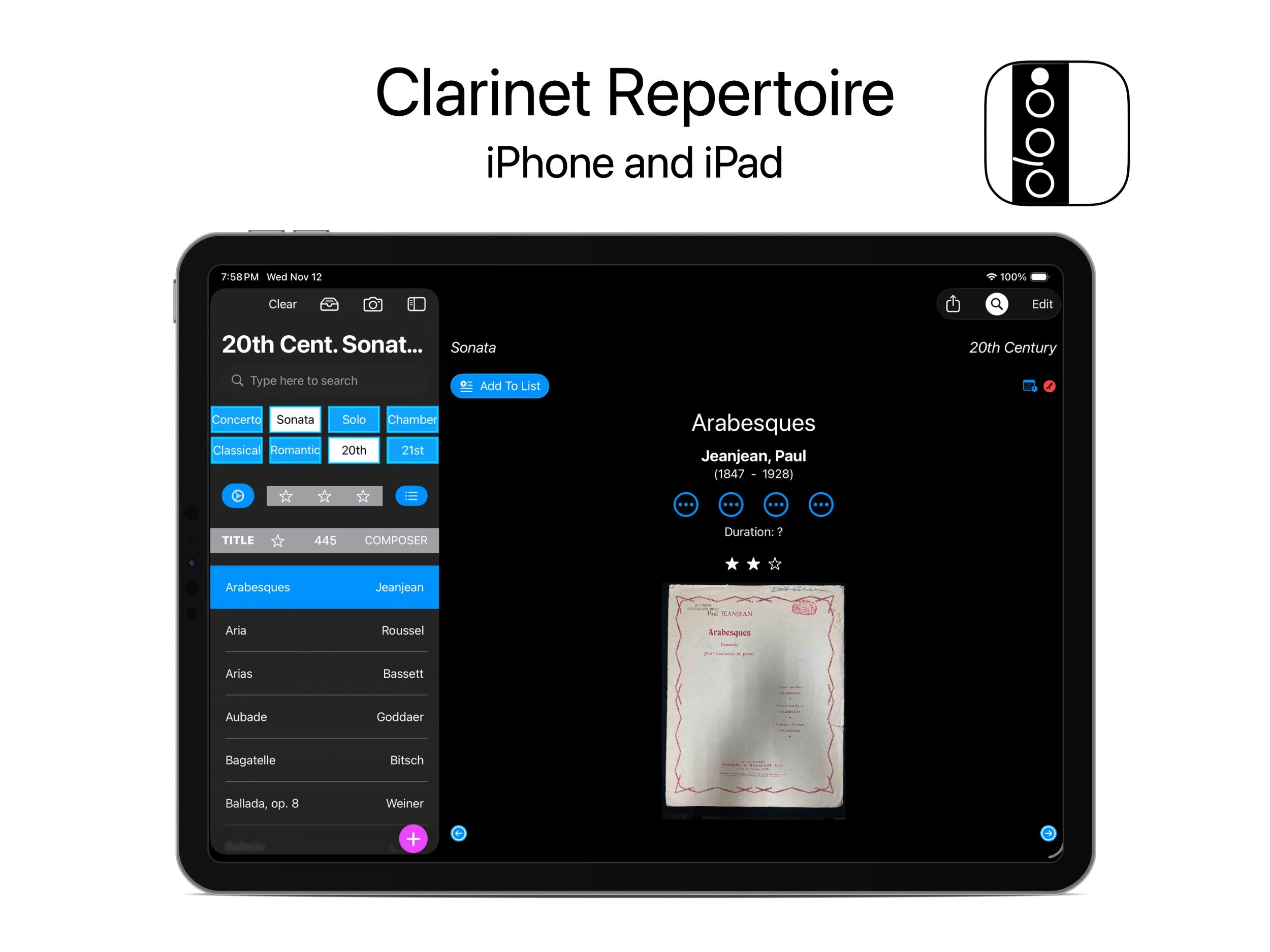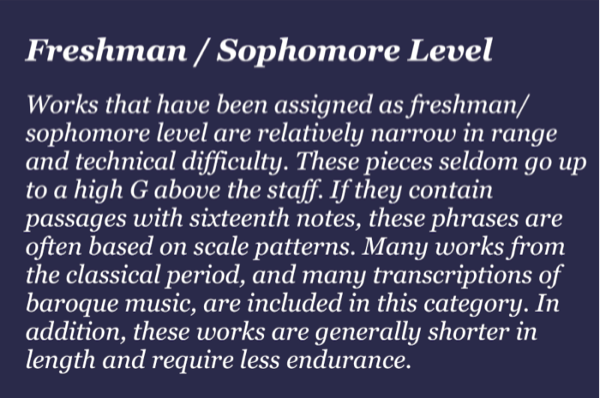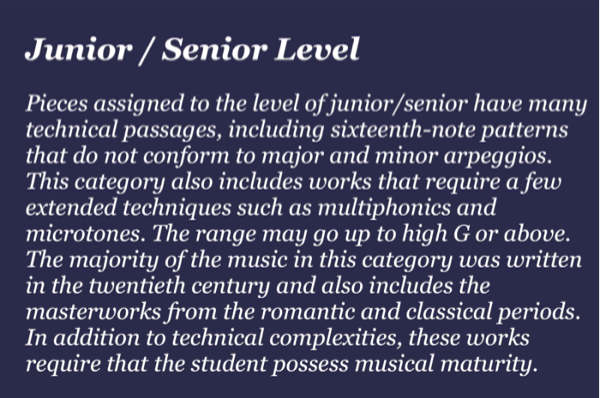Clarinet Repertoire
a Database of music for the clarinet
Clarinet Repertoire is a database of over 1200 pieces of clarinet music. This catalog represents some of the more common works for clarinetists from the Classical period until today. New works will be added over time, and users may submit new pieces for inclusion in future updates. Available on iPhone and iPad.
Background music in video, excerpt from Trio for Clarinets, Op. 7, no. 3 by Jacques Bouffil, performed by Adam Ballif
Initial Database of Clarinet Repertoire
1200 pieces are provided when Clarinet Repertoire is installed. If you are logged into your iCloud account on your device, these pieces are automatically uploaded to iCloud and will sync to your other devices. Any changes you make to these pieces, such as adding notes, composer biographies or listening links, will also sync to your other devices. Use the filter buttons to narrow your searches by time period or genre. The three stars represent difficulty level. One star corresponds to pieces suitable for high school or university freshman/sophomore-age students. Two stars are for university junior/senior students, and three stars are for graduate students and professionals. Specific criteria for these ratings are below. To refresh the search and return to all pieces, tap "Clear."
The database may be sorted by Title or Composer. Tap on the Title or Composer heading to re-sort the list.
Lists
Lists are for storing ideas for recitals, lists of potential teaching pieces, pieces that you want to learn at a later date, etc... Lists have a title and a category. Categories aren't required, but can be used for sorting lists. Lists may be re-ordered for planning out recitals. If the list does represent a recital, performer information for the recital may be entered and a program may be exported. Tapping "Create Program" will format the pieces, performer information, and program notes into a PDF file that you can save or email. Pieces may be added to lists from the Lists view or individual pieces may be added to a list using the blue "add to list" icon.
Quick Capture
The camera icon allows you to take a picture of a piece of repertoire, or recital program, to quickly save a new record for later. These images are saved into the Inbox. After you enter title, composer, and other data about the Inbox item, it is automatically removed from the Inbox and added to your repertoire database.
Cover Images
A photo of the cover page or first page of score may be added using the camera or photo library. Images that are taken with the camera are also saved to your camera roll.
ForScore
If you have ForScore installed as your sheet music reader, you can indicate if an item in the database is also saved in ForScore. If the title matches in ForScore, you can tap the ForScore icon to link to the piece in ForScore.
Listening Links
Up to four URLs may be saved to each piece for accessing online recordings. Any online link may be saved. If you save a link from Apple Music, Spotify, YouTube, Amazon Music, or Google Play, a specific icon for those services will be shown. If you are subscribed to these services on your device, the links will take you out of Clarinet Repertoire so that you can listen directly within those apps.
Adding to the Public Database
If you find new pieces and want to contribute to the public database, export your recently added pieces and send them to the developer. This feature is available in settings. After reviewing the newly submitted pieces, the developer will decide what to include in the public database. New works will be included in the next app update and available to all users.
Difficulty Scale
Freshman / Sophomore
Works that have been assigned as freshman/sophomore level are relatively narrow in range and technical difficulty. These pieces seldom go up to a high G above the staff. If they contain passages with sixteenth notes, theses phrases are often based on scale patterns. Many works from the classical period, and many transcriptions of baroque music, are included in this category. In addition, these works are generally shorter in length and require less endurance.
Junior / Senior
Pieces assigned to the level of junior/senior have many technical passages,including sixteenth-note patterns that do not conform to major and minor arpeggios. This category also includes works that require a few extended techniques such as multiphonics and microtones. The range may go up to high G or above. The majority of the music in this category was written in the twentieth century and also includes the masterworks from the romantic and classical periods. In addition to technical complexities, these works require that the student possess musical maturity.
Graduate / Professional
The entries assigned to the graduate level are pieces suitable for the professional. These works demand technical mastery and the ability to play throughout the full range of the clarinet. All manner of extended techniques are required including flutter tonguing, fluting, singing while playing, circular breathing, and double tonguing. All of the works in this category were composed in the twentieth and twenty-first centuries.
“This database of music resulted from my dissertation, which included interviewing Robert Spring and Howard Klug about their teaching philosophies. I then analyzed their individual teaching libraries, which included all of the pieces in this initial database.”















